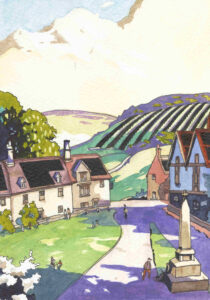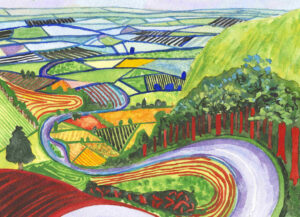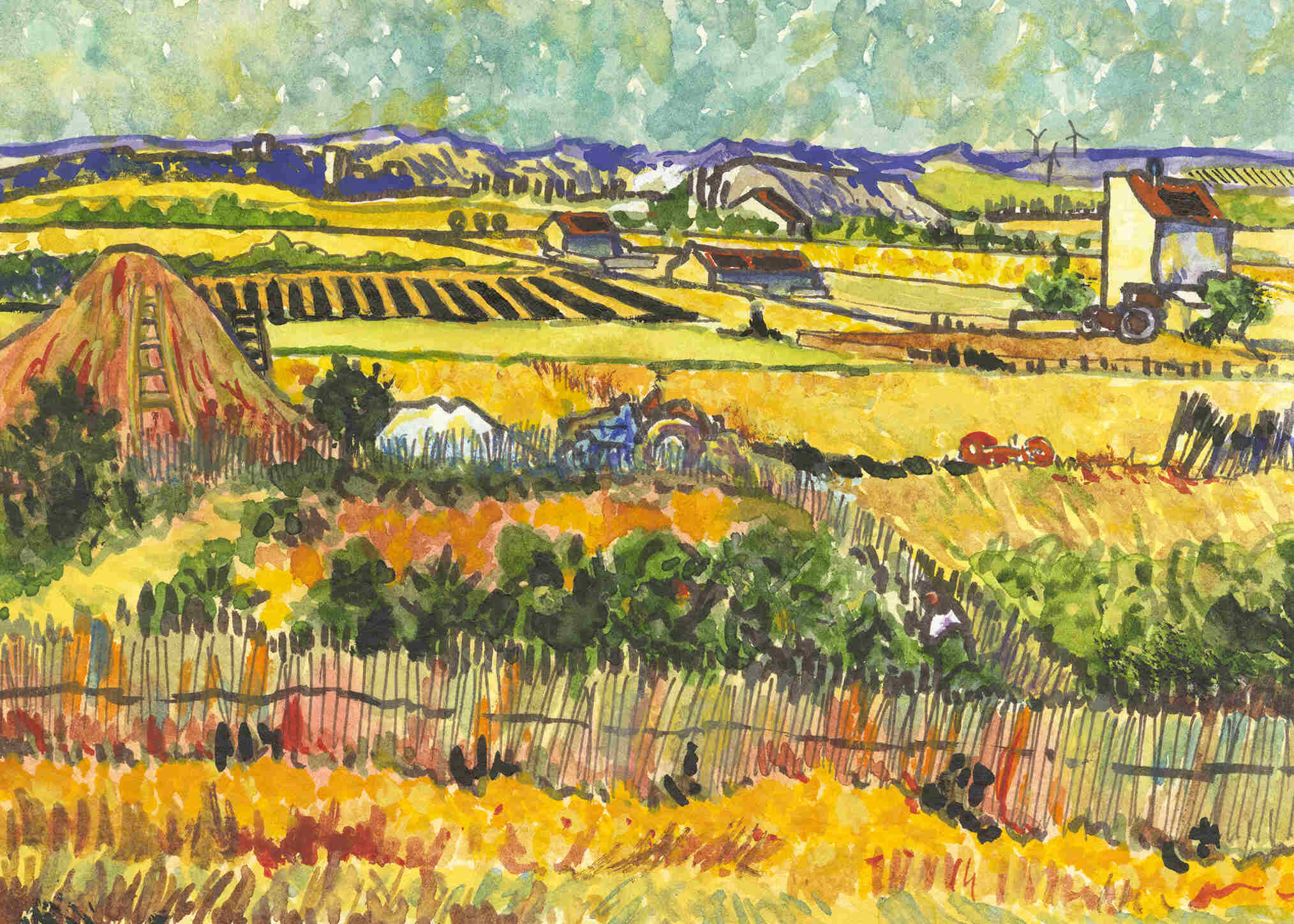This was my fourth year taking part in Pint of Science / Creative Reactions. Scientists taking part in the international festival, Pint of Science, are paired with artists, who are invited to have a ‘creative reaction’ to their science.
I was paired with Dr Paul Coxon of the University of Cambridge Department of Materials Science and Metallurgy. He is aiming to make silicon solar cells more efficient. He uses molten salt electrolysis to create nanoporous ultra black silicon. Its random nanoscale surface texture allows light to be collected at any time of day. My kneejerk reaction was to think about the negatives. What would our world look like if every roof had a solar panel, and the fields were full of solar panels? But I realise that we will only continue to have those landscapes IF projects like this succeed in finding sustainable and non-polluting ways to power our lives. We cannot afford to think of the solar power spoiling our beautiful landscape, but of being its saviour.
I chose my three favourite landscape paintings, and recreated them with the addition of solar panels, on the roofs and in the fields. I usually avoid black in my paintings, but this time I used the most pigmented, flattest, mattest, black acrylic paint in the world to paint the blackest solar panels in the world.
We need to blacken the landscapes to save them.
Blackened landscapes 1 (above)
after Vincent van Gogh: Harvest at La Crau (1888)
pen, watercolour, and Stuart Semple Black 2.0 acrylic
in 8 x 10” frame
Blackened landscapes 2
after Frank Sherwin, Worcestershire (Travel By Rail) (1950)
pen, watercolour, and Stuart Semple Black 2.0 acrylic
in 8 x 10” frame


Blackened landscapes 3
after David Hockney, Garrowby Hill (1998)
pen, watercolour, and Stuart Semple Black 2.0 acrylic
in 8 x 10” frame

